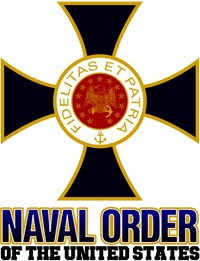News & Tall Tales. 1800s.

Cora and Casey
Among the immigrants to San Francisco were the most ruthless criminals in the world. A substantial number came from Van Dieman's Land and New South Wales where the British had sent their criminals in the mid-1800s. Once those criminals served their time, they sailed for California.

The numbers grew and the "Sydney Coves" (Sydney Ducks) were almost impossible to control as witnesses and prosecutors were few. The offenders operated unchecked from late 1849 through early 1851 with robberies, midnight assaults ending in murder, gambling, and starting fires, during which they would plunder shops and homes. At one point, more than 100 murders had been committed within the space of a few months and not one criminal had been executed.
To regain order, two vigilance groups were formed between 1851 and 1856. Unfortunately, rather than stemming crime, they were among the most notorious. The 1856 Vigilance Committee was one of the most successful organizations in the vigilante tradition of America's Old West.
One of the Vigilance Committee's (it's unclear as to which), was comprised of some of the richest, most influential, orderly and respectable citizens of San Francisco during the City's early days, and developed it's own writ of conduct.
The catalyst for the Committee was a political duel in which James P. Casey shot James King of William. The 1856 Committee was also much larger, claiming 6,000 in its ranks.

The 1856 lynchings of Charles Cora and James Casey, occurred towards the end of one Committee. Cora and Casey were lynched by the Committee of Vigilance as murderers, after killing men in duels. Cora had shot a U.S. Marshall, who had insulted Cora's mistress while drunk; Casey had murdered a rival newspaper editor, shortly after the man published an editorial exposing Casey's criminal record in New York.
May 23, 1856, Marysville Daily Herald
San Francisco, May 22d 2 PM
The rush to see Cora and Casey suspended was great. Numbers flocked and filled up every place where a sight can be obtained.

4 o'clock PM: Cora and Casey were brought out on a platform suspended from the windows of the Vigilance Committee room, 39 Sacramento street.
Cora at once threw a white cap over his head, and awaited his fate with stern nerve. Casey spoke between 7 and 10 minutes, at the end of which time he was perfectly exhausted and had to be supported by those near him. He then drew a white cap over his eyes, and at the work "strike" both were launched into eternity.
But few were present at that time, as it was the general expectation they would be hang tomorrow at 12, and the people had assembled along the line of the funeral procession. When the news of the hanging reached Montgomery street the rush for that locality was terrific.
I have found it impossible to obtain the purport of Casey's speech, as it was spoken is as tremulous voice and heard but by a few. The last part of the funeral procession has just passed along Montgomery street. The largest procession ever seen in this city. It was composed of all classes and was 35 minutes in passing corner of Merchant and Washington streets.
Casey's Last Words - Dying Speech
The following is a copy of Casey's dying speech as reported for the Morning Globe:
FELLOW CITIZENS: I am about to die; I have been persecuted; I am accused of assassination; I have an aged mother, and let no man say, when l am dead, that I was an assassin; I was brought up to fight when insulted, and think it is the best way of settling difficulties, and though I did take the life of Mr. King, yet I call God to witness that I did not intend by thought or deed to murder him; the Globe, Alta, Chronicle and the other papers have persecuted me, but I am innocent of murder; I am now going to meet my God, and beg all to forgive me as I, from my heart, forgive them; when I am dead, let no one say I was a murderer; let not the steamer papers carry the news to my aged mother that I was a murderer; you will doubtless see my funeral pass tomorrow; let no man point to it and say there goes a murderer; let the many sins that have accumulated upon me for twenty-eight or nine years be forgotten; let my name sink into oblivion.
Here his self-possession failed him and he had to be lifted on the trap door, when the signal was given and the soul of James P Casey was landed into eternity.
10 o'clock p.m.: Early this morning it was rumored that Casey and Cora would be hung to-day. There was an immense crowd collected, but seeing no signs, partially dispersed. The streets along which the funeral was to pass, being lined with spectators from Bush on Montgomery, all along Montgomery to Washington up to Stockton, and on to the Unitarian Church, from whence the possession started.
Rev Messrs. Cutler Lacy and Taylor officiated at the burial ceremony The corpse was conveyed from his late residence to the Unitarian Church by California Masonic Lodge, No 1, of which he was a member. Mrs. King and children accompanied the hearse, followed by the different Lodges of the Masonic body and other societies. The draymen having their horses all arraigned so as to color; 312 dray horses, four abreast.
The paper reported that "here the wires broke," thus the story was not fully published.

The Naval Order of the United States has a history dating from 1890. Membership includes a wide range of individuals, many with highly distinguished career paths.
The San Francisco Commandery meets the first Monday of each month at the San Francisco Italian Athletic Club in San Francisco, California and holds two formal dinners each year.

 Copyright ~ 1998-2018.
Copyright ~ 1998-2018. 